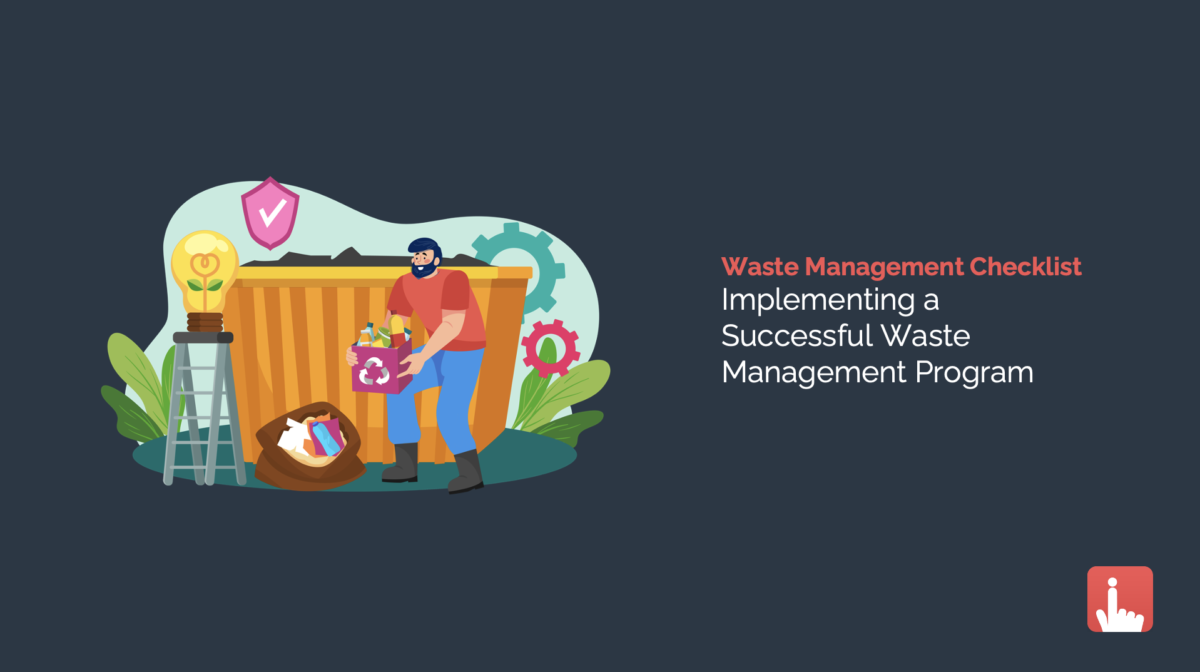Solid waste management means ensuring that all waste is properly sorted, disposed of, and recycled in an environmentally friendly manner.
A solid waste management checklist is used by industries to inspect waste management, sorting, and disposal.
Table of Contents:
1. What is Waste Management and Why is it Important?
2. 3 Kinds of Solid Waste
3. Types of Solid Waste Disposal Methods
4. Implementing a Waste Management Plan
5. Successful Waste Management Program with FAT FINGER
What is Waste Management and Why is it Important?
Waste management is the process of handling and disposing of waste materials in a way that minimizes the impact on the environment. It is an important part of environmental protection, and there are regulatory standards set by Environment Protection Agency (EPA) in place to ensure that waste is managed responsibly.
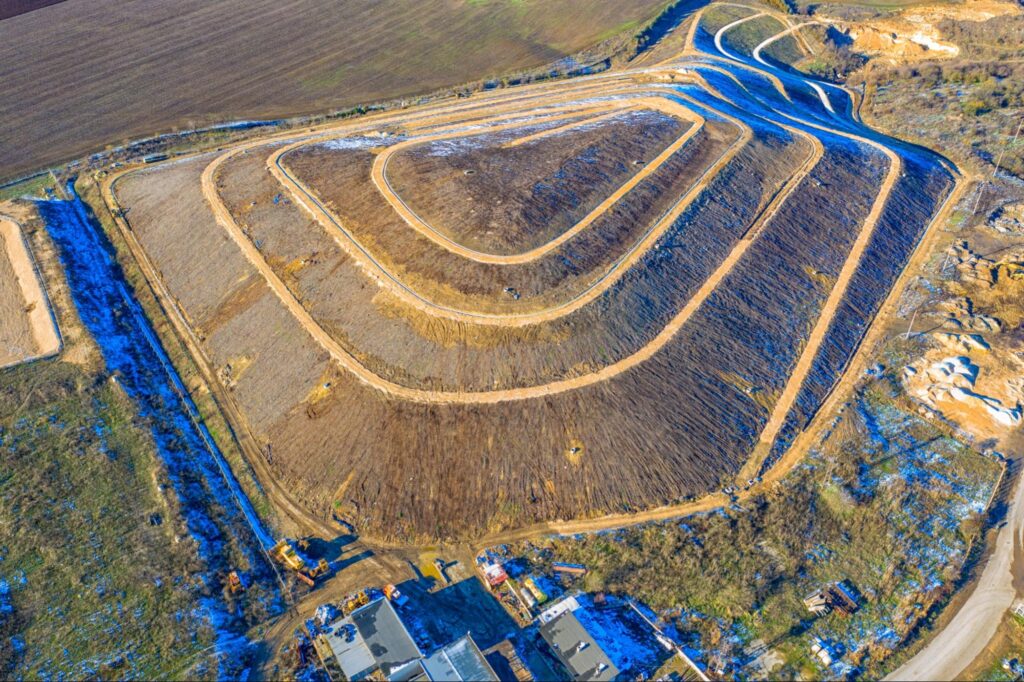
There are several different aspects to waste management, including waste segregation (which involves separating waste materials for recycling or disposal), waste collection, waste transportation, and waste disposal. With the increase in global population and consumption, it is more important than ever to manage waste properly. Improper waste management can lead to pollution, disease, and other problems.
There are many reasons why waste management is important. For one thing, it helps to protect the environment by preventing pollution. It also helps to conserve resources, since recycling and reuse can help reduce the amount of new materials that need to be produced. Additionally, waste management helps to create jobs and support the economy. Finally, it helps to ensure that waste is disposed of safely and in a way that minimizes its impact on human health.
In conclusion, waste management is a critical part of environmental protection. By following proper waste management practices, we can help to protect the environment and human health.
3 Kinds of Solid Waste
Solid waste management is a pressing environmental concern. The term “solid waste” refers to any unwanted or unused materials, including both organic and inorganic matter. There are many different types of solid waste, and each type requires special handling and disposal methods.
Municipal solid waste (MSW) is the most common type of waste from homes and businesses that is collected by the municipality. This waste includes items such as food waste, paper and cardboard, plastics, glass, metal, textiles, and electronics. MSW can be divided into two categories: residential waste and commercial waste. Residential waste includes waste from households, while commercial waste includes waste from businesses and other organizations. Municipal solid waste management is a complex and challenging issue. In 2018 EPA study, the amount of MSW (municipal solid waste) generated in the U.S was 292.4 million tons, or 4.9 pounds per person daily on average. Finding ways to reduce the amount of MSW generated and increase the rate of recycling are important goals for waste management professionals.
Hazardous waste is waste that is harmful to human health or the environment. It includes materials that are flammable, toxic, or corrosive. Hazardous waste can be solid, liquid, or gaseous. It can be generated by businesses or households. Some examples of hazardous waste include: used oil, batteries, asbestos, pesticides, and mercury. Hazardous waste must be managed properly to prevent harm to people and the environment. Improper management of hazardous waste can result in contamination of air, water, and soil; exposure to harmful chemicals; and adverse health effects in people and animals
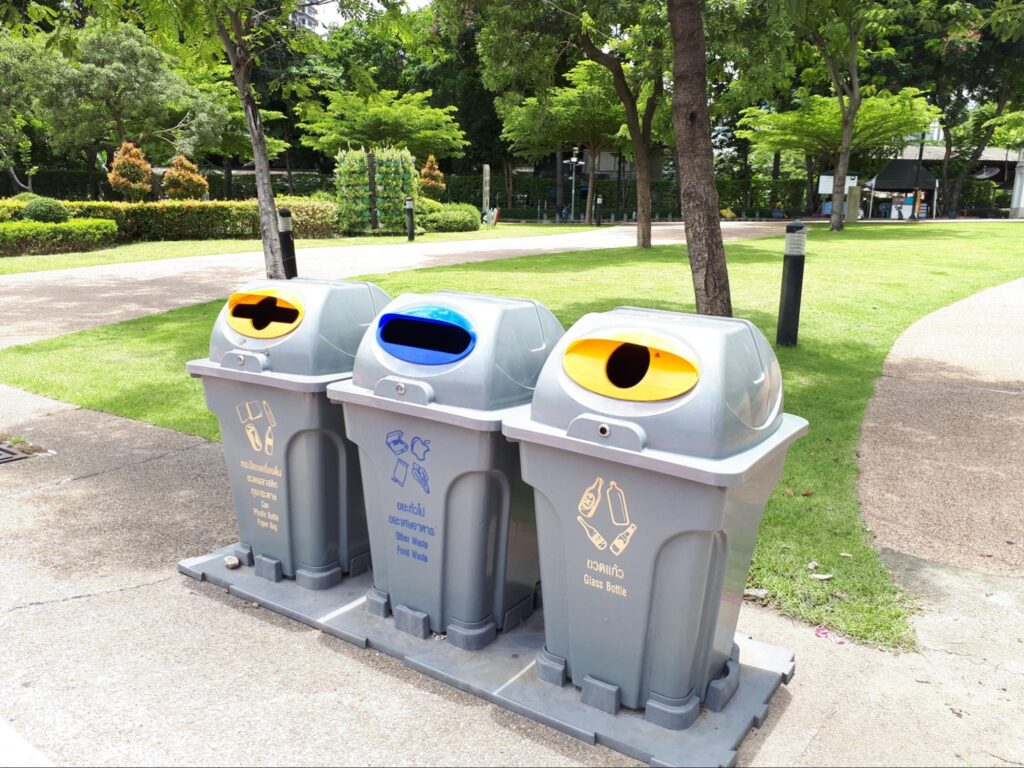
Biomedical waste is any waste that contains or may contain infectious or potentially infectious material. It can come from many sources, including hospitals, laboratories, clinics, veterinary facilities, and nursing homes. Each type of biomedical waste requires special handling to ensure that it is safely disposed of and does not pose a risk to public health. Hospitals generate the majority of biomedical waste. Each year in the United States, hospitals produce 5.9 million or more tons of medical waste.Fortunately, there are strict regulations in place governing the management of infectious waste, and hospital staff are well trained in how to safely handle and dispose of it.
Each type of solid waste poses different risks to public health and the environment. That’s why it’s so important to use proper waste management practices. With the right approach, we can minimize the negative impact of solid waste on our planet.
Types of Solid Waste Disposal Methods

There are many different types of solid waste disposal methods, and the most appropriate method depends on the type and quantity of waste to be disposed of. The most common types of solid waste disposal methods are landfill, incineration, recycling, and composting.
Landfill is the most common type of solid waste disposal method. In a landfill, wastes are placed in a hole in the ground and covered with soil. Landfills are typically used for municipal solid waste, construction and demolition debris, and medical waste.
Incineration is another common type of solid waste disposal method. In incineration, wastes are burned at high temperatures to reduce their volume by up to 90%. Incineration is typically used for hazardous waste, including medical waste, electronic waste, and industrial waste.
Recycling is a process that reduces the volume of solid waste by converting it into new products or materials. Recycling is typically used for paper, glass, metal, and plastic.
Composting is a process that breaks down organic wastes into a nutrient-rich soil amendment. Composting is typically used for yard trimmings, food scraps, and animal manure.
The most appropriate type of solid waste disposal method depends on the type and quantity of waste to be disposed of. For example, hazardous wastes require special disposal methods to protect human health and the environment. Implementing a waste management system protects the environment and public health by ensuring that solid wastes are properly handled, managed, and disposed of.
Implementing a Waste Management Plan
Implementing a waste management plan is not a one-time event, but rather it is an on-going process that should be continually reviewed and updated as conditions change. There are six basic steps to implementing a waste management plan:
1.Conduct a waste survey to determine what types of waste are being generated and how much of each type.
2.Based on the survey results, design a waste management system that will effectively deal with the waste.
3.Implement the waste management system. This may involve training employees on proper waste handling procedures, setting up recycling programs, etc.
4.Monitor the waste management system to ensure that it is functioning properly. This may involve conducting periodic audits, recording data on waste volumes, etc.
5.Make changes to the system as necessary to improve its performance.
Successful Waste Management Program with FAT FINGER

Waste management is a critical part of any business, but it can be difficult to keep track of everything. Without a good waste management program in place, you’re at risk for costly fines, bad publicity, and even health hazards. Every industry is responsible in maintaining a safe and clean working environment, but some face more challenges than others.
FAT FINGER is the perfect solution for your waste management needs. FAT FINGER can help you customize your waste management checklist and make sure everything is running smoothly. You can even schedule inspections and add reminders. Plus, with photo attachment and real-time reports, you’ll have everything you need to pinpoint any areas of improvement.
With FAT FINGER, you’ll have valuable insights into your waste management program that will help you pinpoint where you need to focus next. No more bad data, poor quality reports, and manual tasks which all leads to environmental safety risks.
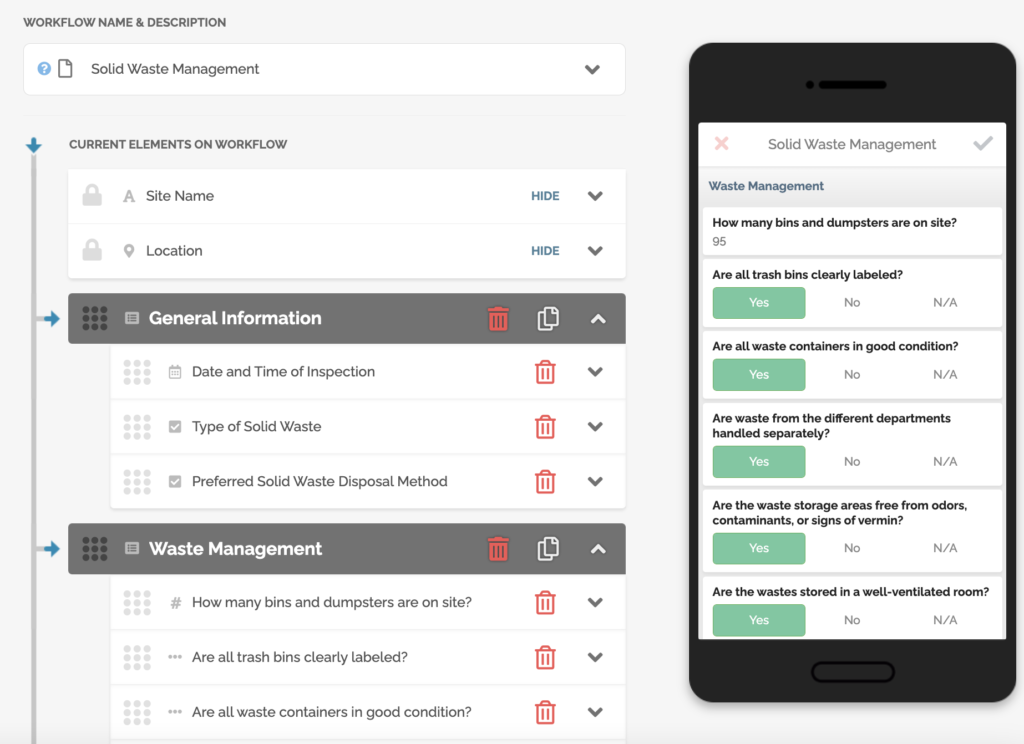
Worried about your waste management program?
Keep your workplace safe and compliant with our easy-to-use app. With FAT FINGER, you’ll have everything you need to make sure your waste management program is up to par. Don’t wait – download today!
About FAT FINGER:
Ensure front-line teams do their work correctly every time. Drag & drop digital procedures that unlock operational excellence.In seconds anyone can build and deploy enterprise-grade mobile applications using an easy drag-and-drop no-code builder.
FAT FINGER uses machine learning to coach app users in real-time to make safer and improved decisions.Try building your digital procedure on FAT FINGER for free @www.fatfinger.io
Safety hazard reporting made easy for everyone
We empower EVERYONE to initiate and create positive change to improve the company’s safety records. The only way to keep up with the speed at which the world moves today is to empower everyone from the front-line worker to the executive.
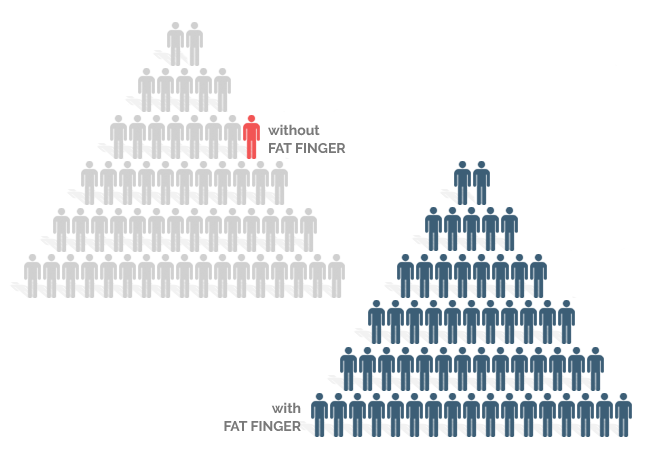
Build and customize your safety procedures in seconds
Every site has its own potential hazards. In FAT FINGER you will be able to import different safety processes and make them your own, or simply create one from scratch. And once you are done, you will be able to export your safety workflow to all of your different sites.
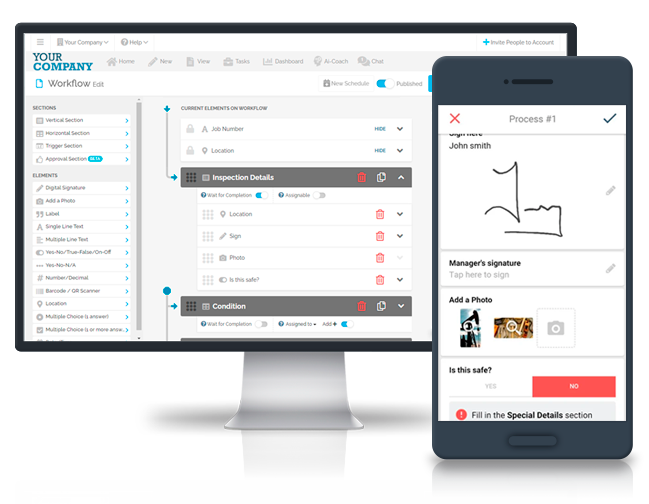
FAT FINGER is a key safety tool
FAT FINGER is the right place where to do all your safety checklists before performing risky tasks out in the field. And also allows any employee to share information in real-time with the entire team, such as photos of a potential hazard.

Safety insights in real-time
Every single piece of information captured by your FAT FINGER users will feed your company analytics in real-time. Adopting FAT FINGER will give you show you the risky points of your operations and how to make them risk-free.



